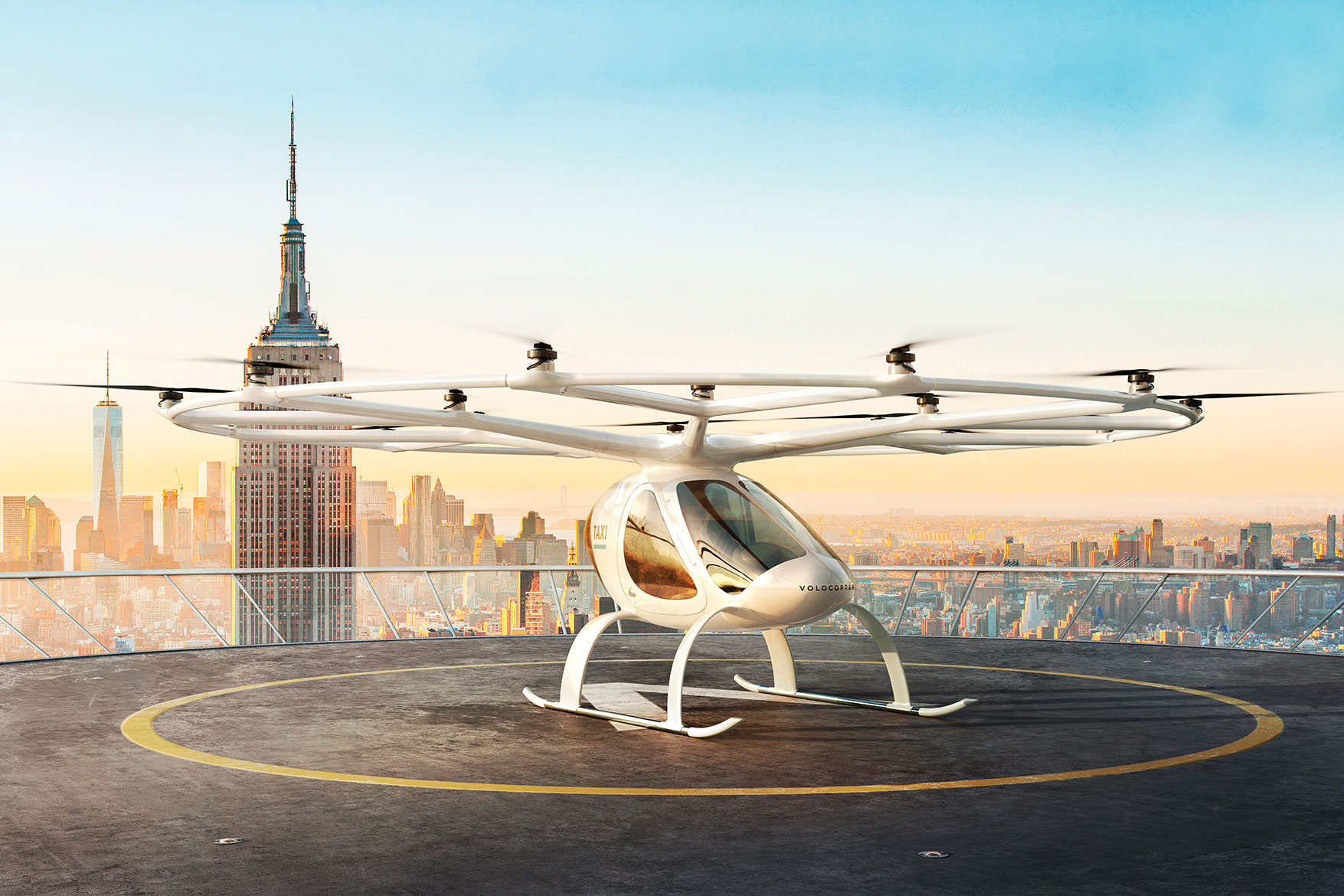—Why the Volocopter may change city travel for good.
What’s the point of having a futuristic city if we can’t get some flying cars? Since the first run- in with traffic, the unused asset above our heads offered pipe dreams of flying past highway log jams and congested intersections towards a brighter future. Although it might not be a flying “car” per se, the in-development Volocopter might be the closest anyone has gotten to it yet. Now a world worthy of a “Jetsons” episode might be in arm’s reach.
With 18 rotors spaced around its large halo, the copter looks similar to the miniature drones of today. Capable of holding two people, flying with a range of 27 kilometers and reaching speeds of up to 100 kilometers an hour, the Volocopter has the potential to become the most efficient and effective mode of transportation in urban centers.
 Oh, and its 100 percent electric, making it an environmentally conscious alternative that simultaneously cleans up our streets as well as the planet. With no combustion engine, the nine batteries powering it do not create any harmful emissions. Even its construction focuses on later impact. Since the Volocopter uses no complex mechanical components, any repairs will be cheap and will have far less pollution than today’s equipment. Considering Volocopter’s ambitious goal to become an integral component of every major city’s infrastructure, the front-end work to avoid harming the environment could positively alter the direction of the transportation industry.
Oh, and its 100 percent electric, making it an environmentally conscious alternative that simultaneously cleans up our streets as well as the planet. With no combustion engine, the nine batteries powering it do not create any harmful emissions. Even its construction focuses on later impact. Since the Volocopter uses no complex mechanical components, any repairs will be cheap and will have far less pollution than today’s equipment. Considering Volocopter’s ambitious goal to become an integral component of every major city’s infrastructure, the front-end work to avoid harming the environment could positively alter the direction of the transportation industry.
You know a company’s onto something when their greatest innovation might not be the all-electric multicopter they’re building. The larger ecosystem they hope to foster could change how humans move throughout cities and usher in a new era of air travel. By incorporating Volo-hubs and Volo-ports into megacities, Volocopter plans on introducing the first-ever air taxi service. The service will make the product available to anyone and work like an Uber of the skies. The company believes that this air taxi service could provide mobility for up to 10,000 passengers a day with the current infrastructure. With new hubs and ports placed in the next 10 years, they hope to up that number to 100,000 people per hour.
Volo-hubs operate similarly to how a gondola on a ski hill might. Volocopters power down outside the hub, where a moving walkway transfers the machine indoors. Passengers then exit safely, both inside and without wind interference—something modern helicopters have yet to solve. The hub will then swap out battery packs before delivering the Volocopter to the next guest embarking to their chosen destination. Because the Volocopter is so compact, these hubs can store enough copters to potentially service a customer every 30 seconds. Coupled with existing helicopter pads, Volocopters can easily integrate into a city without requiring major overhauls.
 If implemented in New York City, a passenger could fly from JFK airport to downtown Manhattan in approximately 15 minutes. Each Volocopter also eliminates a car on the road, helping clean up current traffic on the ground.
If implemented in New York City, a passenger could fly from JFK airport to downtown Manhattan in approximately 15 minutes. Each Volocopter also eliminates a car on the road, helping clean up current traffic on the ground.
Volocopter hasn’t stopped there. They’ve perfected an automated network that makes Volocopter’s extremely easy to fly. The machines have more than 100 microprocessors that aid stability and control, allowing them to be flown with a single joystick that requires little to no training. In some places, the Volocopters would also fly autonomously and link into the network that orchestrates air traffic control. With the network operating to its full potential, hundreds of Volocopters could safely maneuver throughout the high altitudes of a city.
For anyone worried about the noise that might result from hundreds of Volocopters buzzing around town—don’t worry—the company has addressed that concern, too. The 18 rotors operate on a single, narrow frequency band. Even with 18 rotors operating at once, the Volocopter will have the same output from 75 meters that a traditional helicopter would have from 500 meters.
The goals and ambitions of Volocopter stand as a testament to how big dreams can change the present. Rather than building an electric helicopter and stopping there, the company has made significant strides in bringing imagined futures to the realities of today. If Volocopter can achieve its aim and become a mainstay in city travel, the future of air transportation may change for good. By addressing current traffic issues while offering a green solution that improves travel efficiency, the Volocopter could change how cities operate—and a world where we take to the skies on a daily basis may be even closer than we think.






